This campaign was designed to address high-risk drinking among young adults. Binge drinking is a widely accepted behaviour that is tied to the social lives of many young adults who use drinking as a mechanism to achieve social acceptance and a sense of belonging. This is especially important to young adults immediately following high school where they often experience greater independence and are striving to create a new identity for themselves in a new environment.
Trying to counter this type of socially entrenched behaviour is challenging. Audience research indicated that young adults don’t want to hear about the long-term impacts of over-consumption, nor do they believe that overt scare tactics will motivate them to change. With this in mind, we created a campaign that communicates the potential short-term social and physical consequences that can impact things the audience cares about. These messages are paired with easy-to-implement harm reduction tips delivered at times where they are most likely to interpret the behaviour.
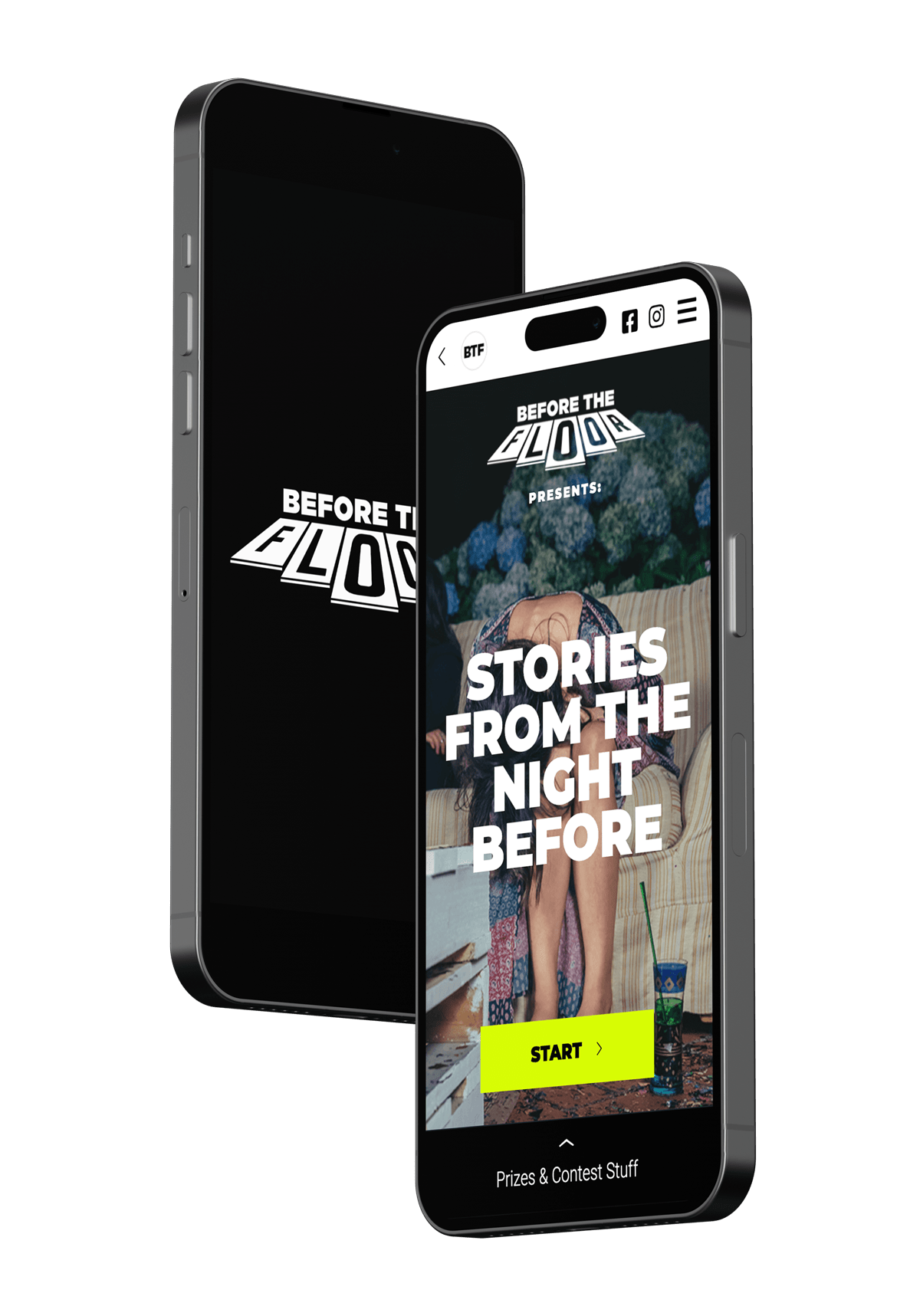
This seems like a no-brainer today, but design EVERYTHING for mobile. Beforethefloor.ca was designed to feel like an app to make it less like a traditional public health campaign and more like an innovative app that appeals to young adults.

Behaviour change messages have greater impact when delivered at a time when the person has the ability to immediately incorporate the positive behaviour into their lives. Based on message testing, we developed specific messages designed to engage the audience on certain days and at specific times.

The following key findings are from an online survey conducted immediately after the 2022 fall media flight (n = 468).
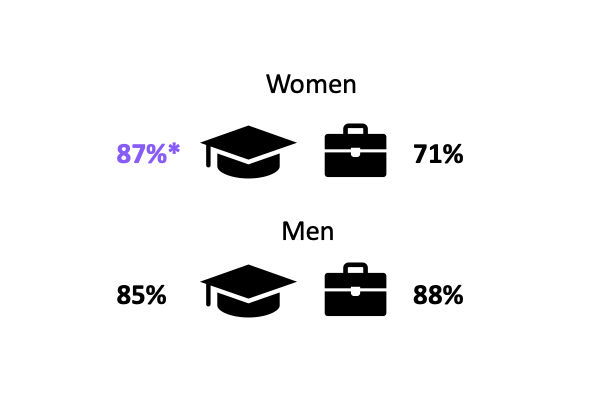
91% of respondents aware of the campaign reported binge drinking in the past 30 days indicating that the campaign reached the intended audience. 87% of women in school reported binge drinking compared to 71% of women engaged in paid work. *Statistically significant
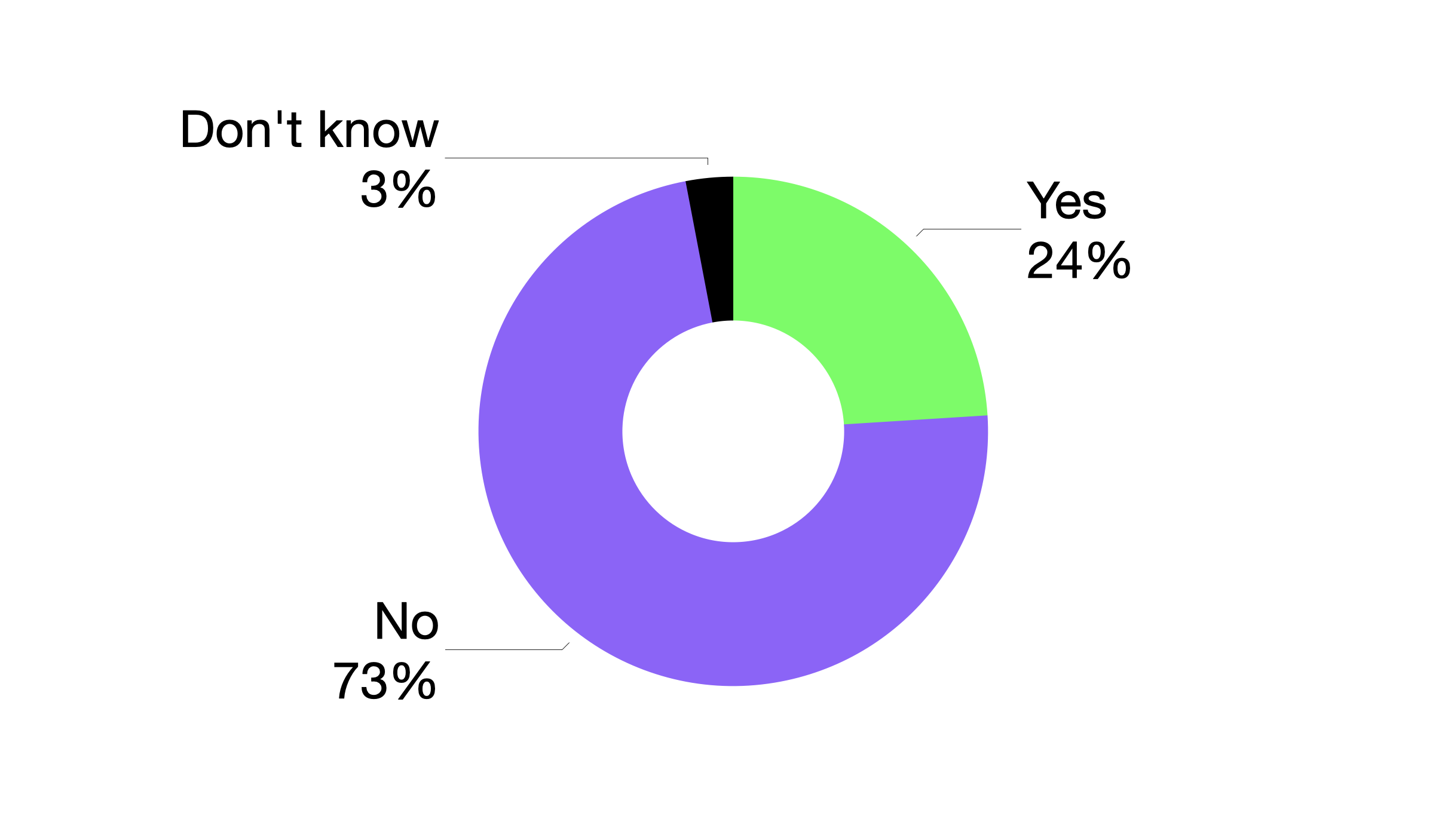
24% of respondents had seen or heard about the campaign after the 2 month media flight.
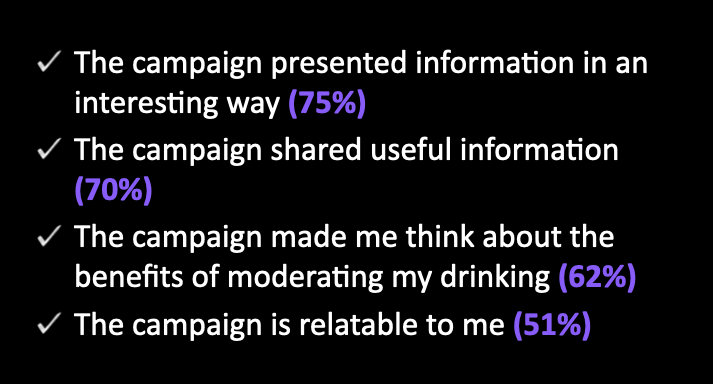
The majority of respondents felt the campaign provided interesting and useful information in a relatable way to make them think about the benefits of moderating their drinking.
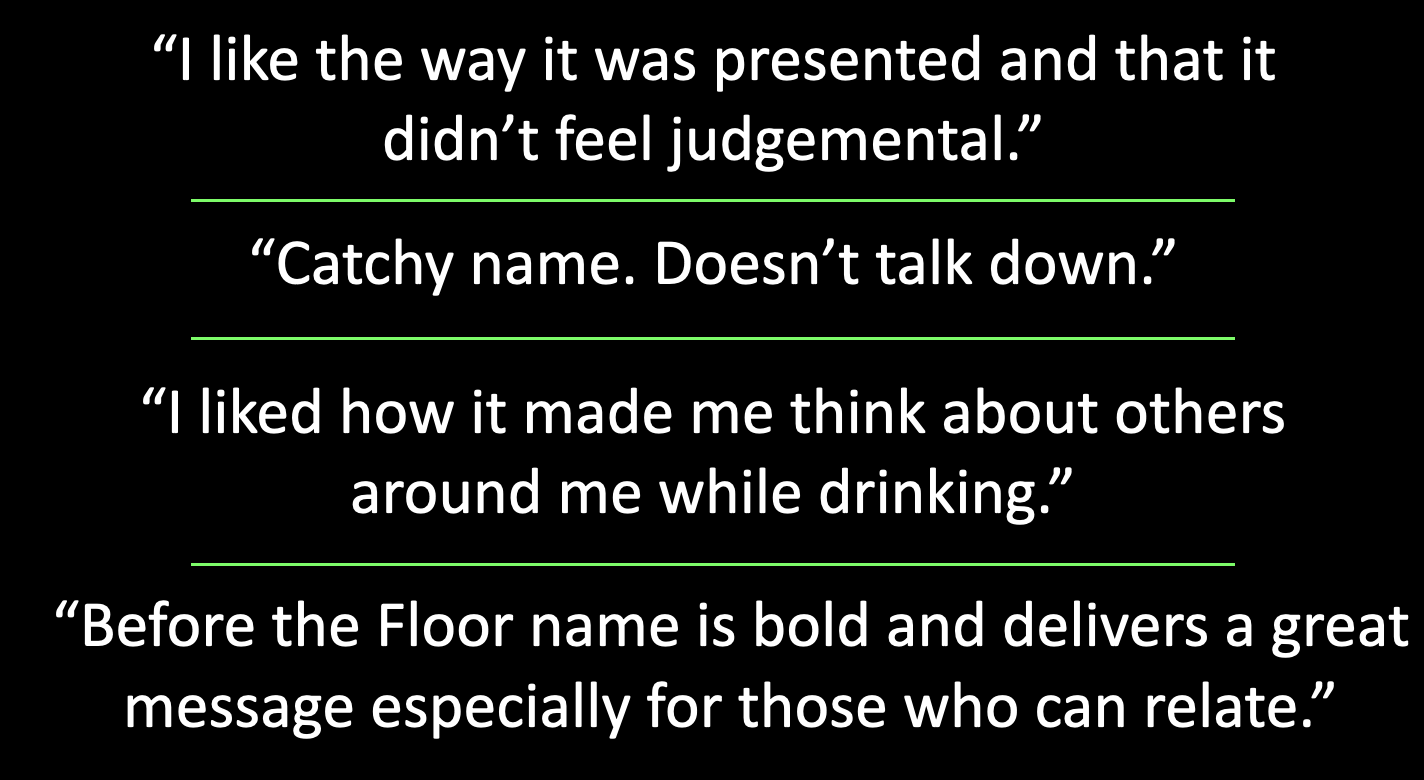
The audience liked that the campaign didn't feel like other drinking reduction campaigns that were perceived as judgemental and "talking down" to them.

The audience found the campaign content highly relatable, which made it easier for them to associate with the negative consequences and internalize how to apply the drinking moderation tips.
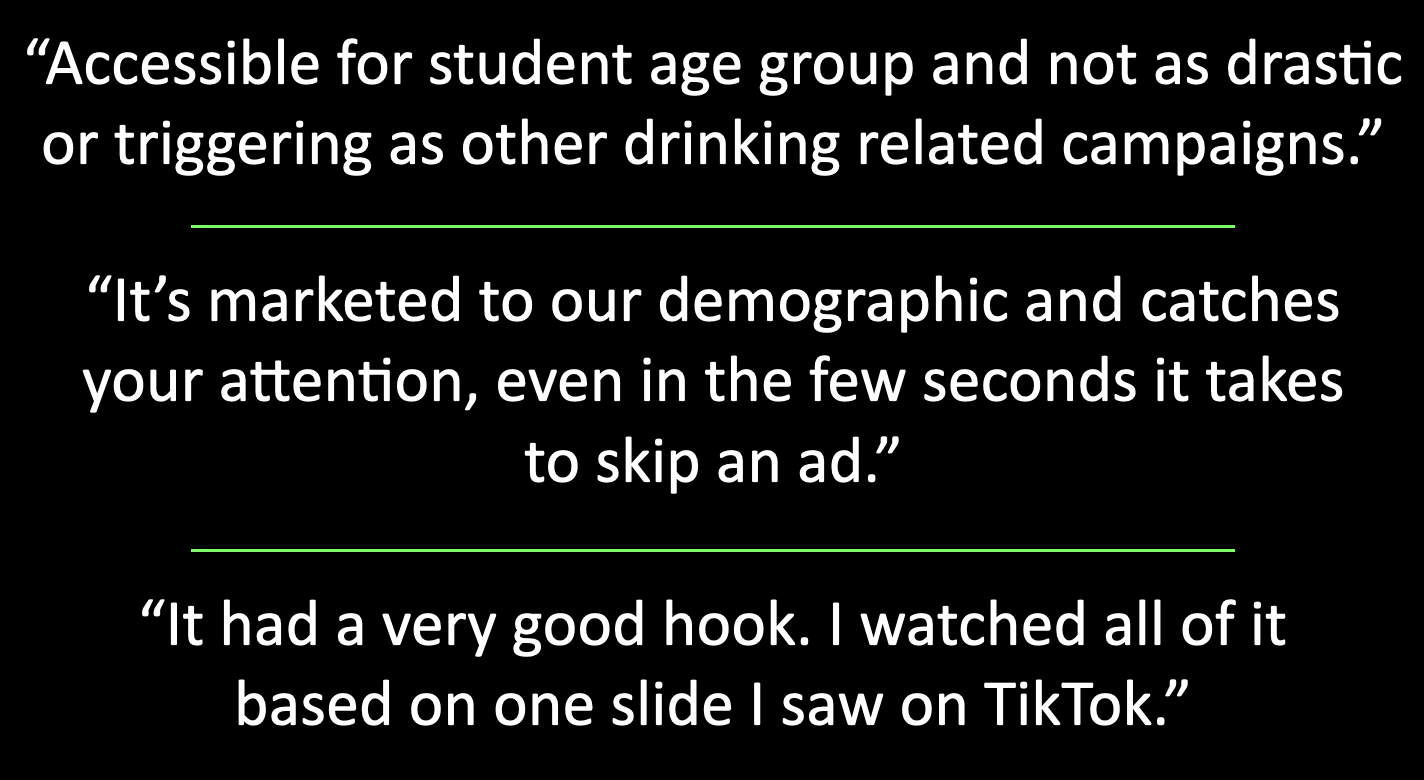
Respondents indicated that the campaign held the their attention due to the relatable, catchy, short-form video content.